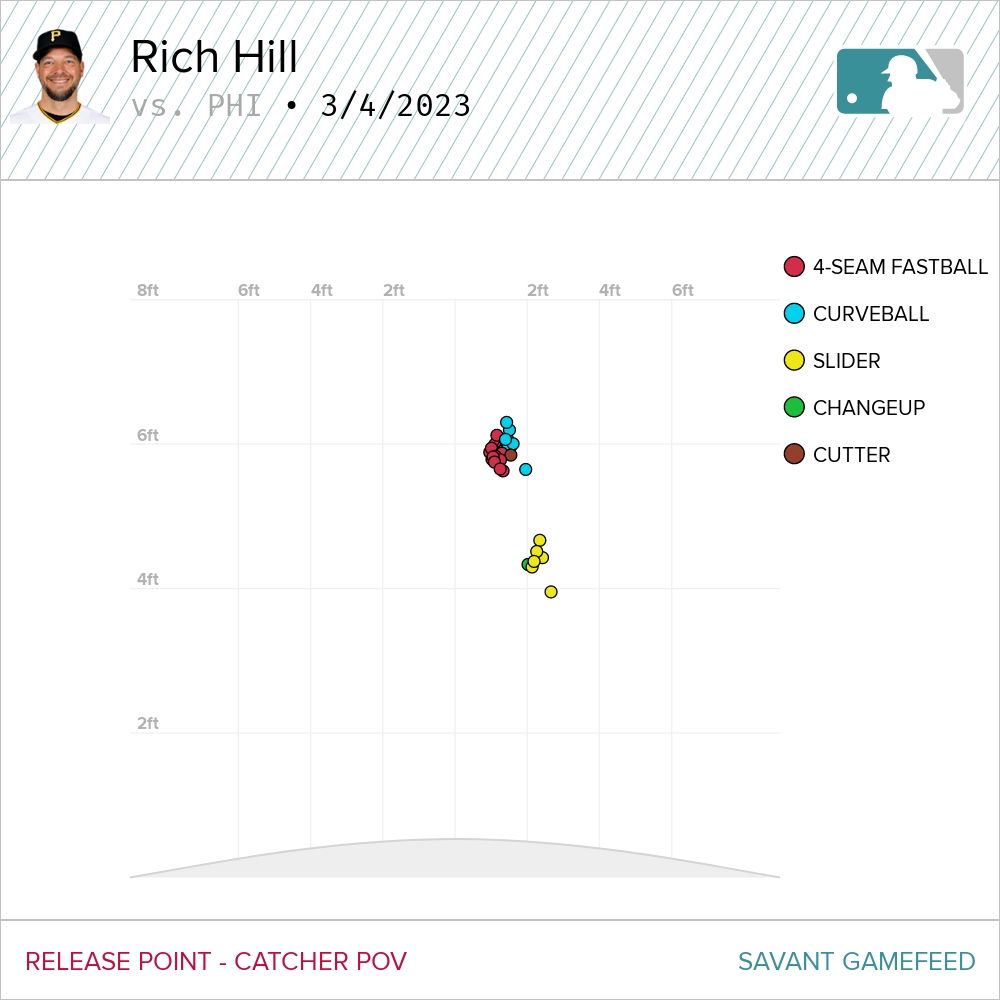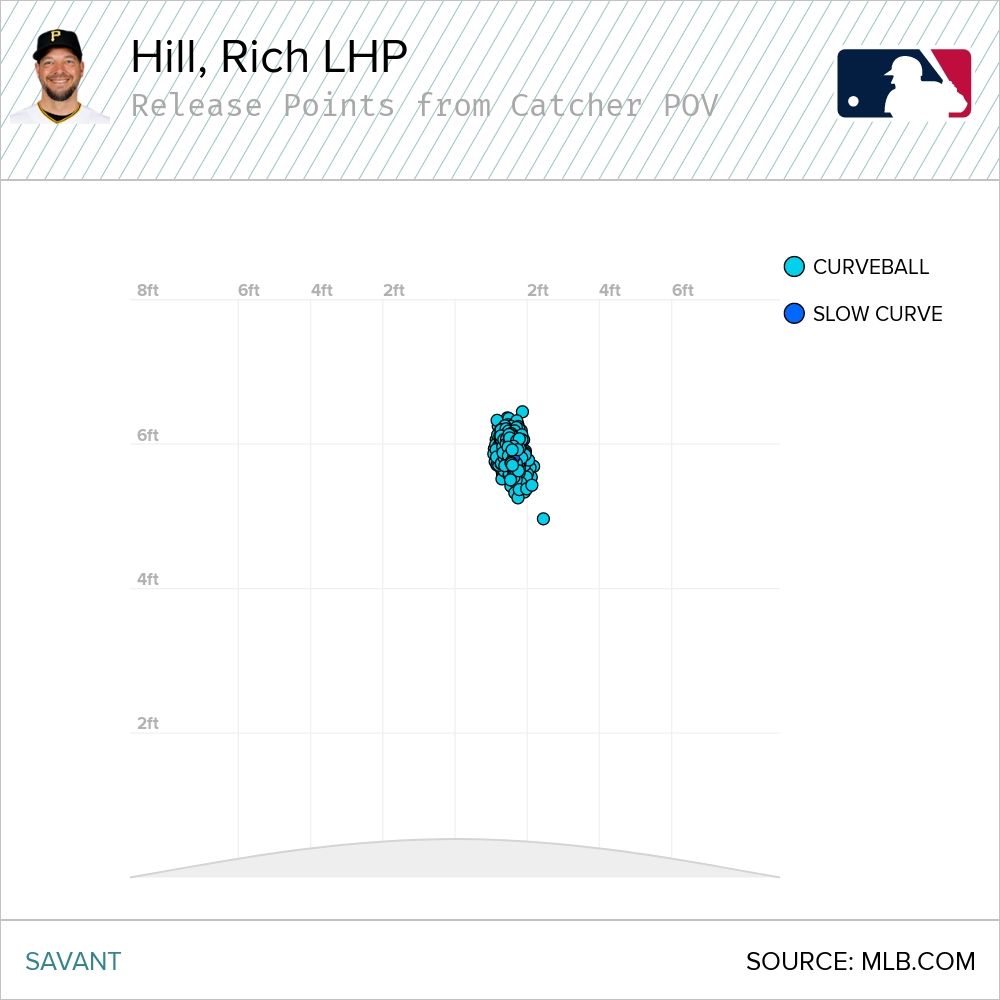BRADENTON, Fla. -- You don't become the oldest professional athlete without having a few tricks up your sleeve.
At 42, Rich Hill became the oldest active athlete in the four professional sports last month whenever Tom Brady retired from the NFL. As he prepares for his 19th major-league season, Hill's career has survived ups and downs, a stint in independent ball and becoming one of the softest tossers in the game because he leaned into becoming the crafty veteran.
The Pirates wanted to bring in a veteran for their young pitching staff. Hill can do that, and based on the conversations he's been seen having with young players in camp, he is doing that.
"He’s a very good influence for our guys," Oscar Marin said. "He’s a great competitor. It’s just unbelievable the presence he has out there. When he speaks, guys listen."
But the Pirates didn't want just another coach, they wanted someone who could help strengthen the rotation. Hill can do that, not just because he has multiple variations of breaking balls at his disposal, but because he can deliver them all from different arm slots.
“It started when I was younger against bigger left-handed hitters," Hill was telling me about throwing from different slots. "The idea was just to give a different look and spin the ball more over the top, but then we got to see how much sweep, how much movement we get side to side, and it really made sense to use it against lefties or backdoor against righties.”
In a league where consistency reigns supreme, Hill has found success by being consistently inconsistent. He can catch a hitter looking on a curveball from the three-quarters arm slot:
Rich Hill threw 10 curveballs today at an average velocity of 69 MPH so all is well with the universe. ♋️ #dickmountain pic.twitter.com/Z6fMOnMBi0
— Codify (@CodifyBaseball) March 5, 2023
Or a breaking ball that runs away from lefties with a sidearm delivery.
Dick Mountain, Sick 68mph Slider with 22 inches of Horizontal Break. 🍆⛰️ pic.twitter.com/KjelXujdlL
— Rob Friedman (@PitchingNinja) March 4, 2023
We're at the start of the "sweeper" craze across baseball, and pitchers are really just trying to find a way to do what Hill can do with his cutter or curve when he wants to. If he needs to take some off to face a righty, he can, too.
Check out his pitch chart in that first game Saturday. He basically worked out of two arm slots all game, but it was just a taste of what he can do and how he uses the pitches.

Mix in his ability to change the shape of his breaking pitches based on grip and how hard he holds the ball, and he can get those two-foot breakers depending on where he releases the ball.
“It’s what makes him so unique and how he’s still able to do what he does," Kevin Plawecki, who caught Hill with the Red Sox last season told me. "He’s arguably got eight different pitches because of his arm slots.”
That pitch chart from Saturday is just a taste of what Hill can do with his breaking stuff. While it was mostly fastballs/curveballs over top and sliders via the sidearm that game, he can throw all of his pitches from both slots (not to mention whatever he can whip up in the spur of the moment). It's why Hill has a way to communicate not only the pitch when working with signs or the PitchCom, but also what release he has.
Because how else can you prepare for which curveball is coming when he can throw it at any of these points:

“It’s important for a hitter, getting that immediate feedback and being able to process it," Hill said. "Understanding how to use that next pitch is valuable.”
Going over average spins and break on these curves and cutters and sliders is almost a futile effort. Can you really take the average whenever he's willingly manipulating the ball so much? He calls it "the art of pitching," so maybe it's best to just assess it as that: Art.
It's given him an approach that has kept in the league for two decades, and one that could be imparted onto the young pitchers he was brought on to mentor.
"Focus in on the target, the goal and the task at hand," Hill said about his approach. "You want to be able to use minuscule little things. How the ball feels in your hand, how it’s coming out. That’s a simple science.”

